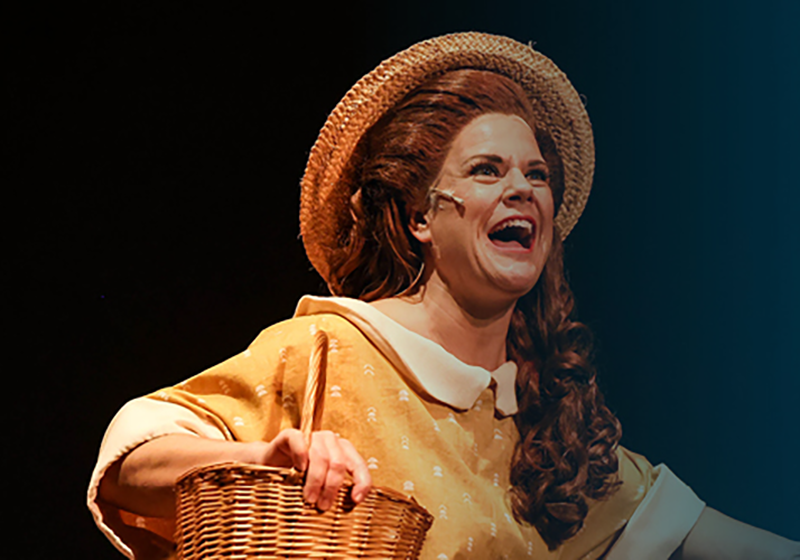
In the Mountains: The Scots-Irish heritage in Appalachia
The multi-part series “In the Mountains” delves into the history of the area surrounding Lees-McRae College. This article explores how Scots-Irish immigrants contributed to the creation of a distinct Appalachian culture.
Between 1820 and 1930 alone, around 4.5 million people immigrated from Ireland to the United States. More than 30 million Americans—about a tenth of the total population—claim some Irish ancestry, so it’s no surprise that many people feel a kinship with the Emerald Isle and are eager to learn more about their heritage.
While many associate Irish immigration with big cities like New York, Boston, and Chicago, a group of immigrants from Ireland had a major impact on the Appalachian region, including in western North Carolina. However, although both immigrant groups belong to the Irish diaspora, they differed greatly in their origins, their religious background, and their contributions to American culture.
Much of what we consider to be “Appalachian culture” actually has its roots in 1600s Scotland. At the time, King James I of England was attempting to solidify his rule over Ireland and encourage the spread of Protestantism in the primarily Catholic country. One of his methods for quelling rebellion was to seize land from the Gaelic (or native) Irish in the area known as Ulster and make it the property of the British crown. The goal of this scheme, called the Plantation of Ulster, was to displace the Irish population and turn the land over to Presbyterians from southern Scotland, who would work the land as sharecroppers.
“This was a dead-end for the Scots-Irish in Northern Ireland because they were essentially powerless,” said Director of the Stephenson Center Kathy Olson. “The new inhabitants of Ireland couldn't own land and they were required to tithe to the Anglican Church of England—not the national church of Scotland, which was the Presbyterian church.”
Migration between Scotland and Ireland continued throughout the 1600s as the Scottish Presbyterians, the British Anglicans, and the Irish Catholics fought over land and sovereignty. A wave of Scottish immigrants to Ulster following a famine in the 1690s led to Scottish Presbyterians becoming the majority community; despite their numbers, however, they were denied political power. They resented the restrictions placed on them by the Church of England and turned their attention to a land that promised both economic opportunity and religious freedom.
Starting in the early 1700s, the group that would come to be called the Scotch-Irish or Scots-Irish began migrating to North America in large numbers. Although the new residents of Ulster were technically Scottish, living alongside the Irish led both groups to influence each other, beyond their shared Gaelic and Celtic heritage. The differentiation between Irish and Scots-Irish didn’t really come into play until violence between Catholics and Protestants in Ireland became more pronounced.
Before the American Revolution, more Scots-Irish emigrated to the continent than almost any other group, and it is estimated that at least 250,000 Scots-Irish lived in the American colonies by the 1770s. Many of those individuals eventually made their way to the Appalachian Mountains.
The Appalachian region became a haven for those who had suffered under oppressive British rule. During the Revolutionary War, many of these Scots-Irish immigrants played a fundamental role in securing an American victory. At the Battle of Kings Mountain, which took place in 1780 near Kings Mountain, North Carolina, descendants of Scots-Irish immigrants to Tennessee and Virginia were instrumental in defeating the opposing Loyalist forces. President Theodore Roosevelt later referred to the victory as the “turning point of the American Revolution.”
Today, North Carolina has the largest percentage of Scots-Irish ancestry of any state, with 2.9% of the population claiming the heritage. South Carolina and Tennessee follow at 2.4%.
Over time, Scot-Irish culture—which is itself a blend of Scottish and Irish traditions—blended with other European, African, and Native American cultures to create the distinctive collection of folklore, art and handicraft, and cuisine that has come to represent Appalachia. However, we can still identify some cultural threads that are uniquely Scots-Irish.
“It would not be an exaggeration to say that the Scots-Irish made the defining contribution to Appalachian culture in terms of shaping the region's cultural identity as distinct from lowland American culture in terms of language, music, religion, agriculture, etc.,” Olson said.
Bluegrass music specifically, with its strong reliance on storytelling and instruments like the fiddle, was heavily influenced by music traditions from both Scotland and Ireland. The Appalachian quilting tradition can also be traced back to Scots-Irish culture, as can the practice of making moonshine. In the book “Appalachian Home Cooking: History, Culture, and Recipes,” author Mark Sohn wrote “For the Scots-Irish, whiskey-making was linked to freedom. They came to Appalachia in search of freedom, and they brought not only their whiskey-making knowledge but also their worms and stills.”
Several Appalachian food staples, like buttermilk and potatoes, also originated with the Scots-Irish immigrants. Even aspects of Appalachian language, like pronouncing pen and pin the same way and referring to valleys as “bottoms,” are remnants of the Scots-Irish dialect.
The Scots-Irish were just one of the groups that found a home and a haven in the Appalachian Mountains, but they left an indelible impact on what we refer to today as “Appalachian culture.”
The stories of the Scots-Irish and other early Appalachian residents are celebrated in the outdoor drama “The Horn in the West,” which is performed every year in Boone and often features Lees-McRae Theatre Arts students in the cast and crew. Lees-McRae dedicates a week each spring to honoring Appalachian heritage, and the Stephenson Center for Appalachia hosts several events a year centered on different aspects of Appalachian culture. The next event will be held on Thursday, March 31 at 6 p.m.



